Dog grooming is essential for keeping your furry companion healthy and looking great. Regular grooming helps maintain your dog’s coat, skin, and paws, while also providing an opportunity to check for any health issues. Plus, it can be a fun bonding experience for you and your pup!
Grooming for Specific Breeds
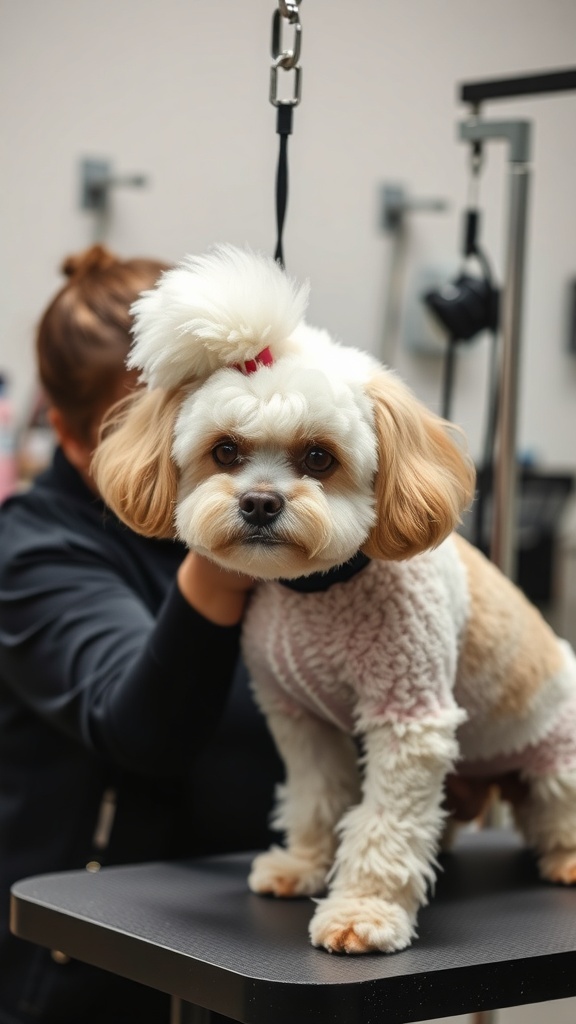
Grooming is not one-size-fits-all, especially when it comes to different dog breeds. Each breed has unique needs that can affect their grooming routine. For instance, some dogs have long, flowing coats that require regular brushing to prevent mats and tangles.
In the image, we see a cute dog being groomed. This little one has a fluffy coat and a stylish topknot, showing off a popular grooming style. Breeds like this often need frequent visits to the groomer to keep their fur looking neat and tidy.
For breeds with shorter hair, the grooming routine might be simpler. Regular baths and occasional brushing can keep their coat healthy. Understanding the specific needs of your dog’s breed can make grooming a more enjoyable experience for both of you.
Understanding Different Coat Types
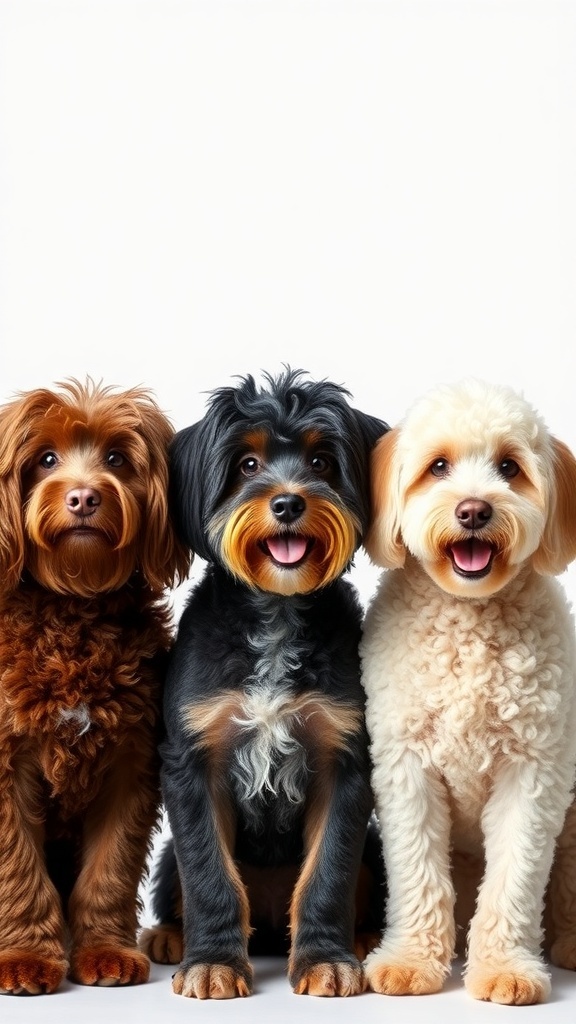
When it comes to dog grooming, knowing your dog’s coat type is key. The image shows three adorable dogs, each with distinct coat styles. From fluffy curls to sleek fur, each type requires different grooming techniques.
The dog on the left has a wavy, soft coat that may need regular brushing to prevent mats. The middle dog has a more wiry texture, which can benefit from occasional trimming to keep it tidy. Lastly, the dog on the right sports a curly coat that often needs special shampoo and conditioner to maintain its bounce and shine.
Understanding these differences helps ensure your dog looks and feels great. Regular grooming not only keeps their coat healthy but also strengthens the bond between you and your pet.
Dealing with Shedding and Undercoat Removal
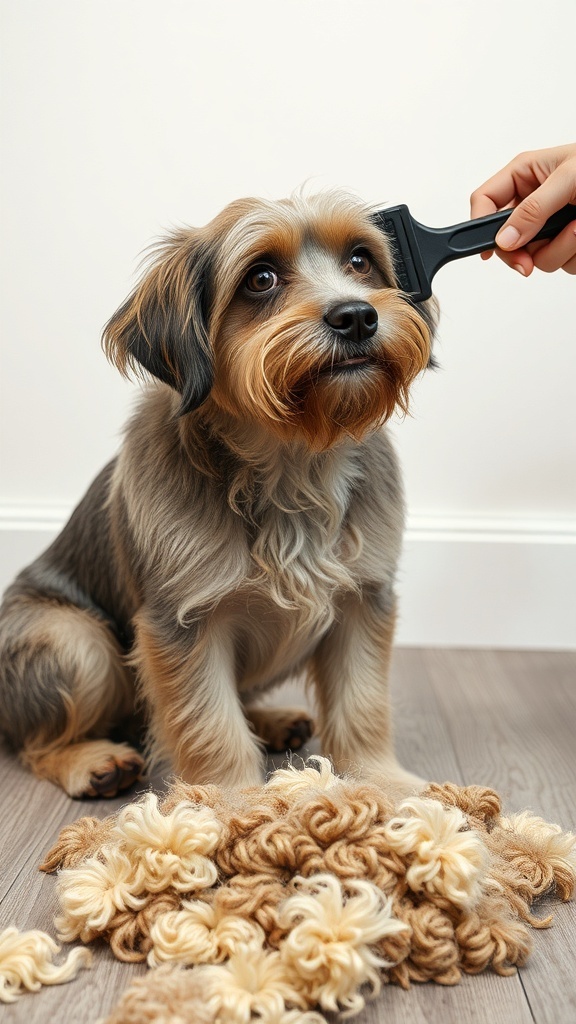
Shedding can be a real challenge for dog owners. In the image, we see a cute dog getting groomed, with a pile of fur on the floor. This visual highlights the importance of regular grooming to manage shedding effectively.
Using the right tools is key. A slicker brush, like the one shown, helps remove loose hair and undercoat. It’s gentle on the dog’s skin while effectively pulling out the dead fur. Regular brushing not only keeps your home cleaner but also promotes a healthy coat.
Don’t forget to check for mats and tangles, especially in long-haired breeds. These can trap dirt and moisture, leading to skin issues. A good grooming session can prevent these problems and keep your dog looking sharp.
Lastly, consider the season. Many dogs shed more in spring and fall. Adjust your grooming routine accordingly to stay ahead of the fur situation. Happy grooming!
Ear Cleaning and Care for Dogs
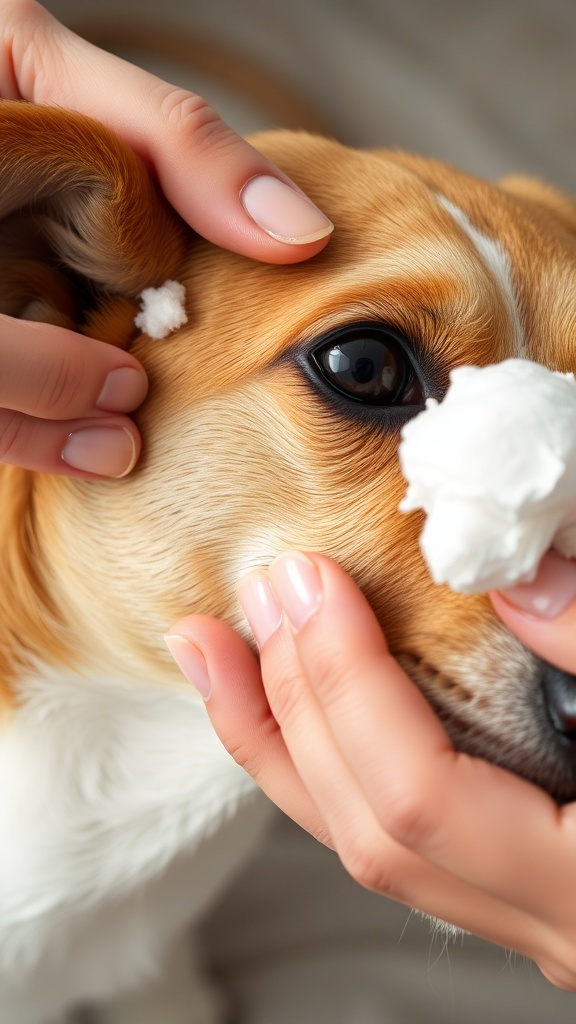
Cleaning your dog’s ears is an important part of grooming. It helps prevent infections and keeps their ears healthy. In the image, you can see a person gently cleaning a dog’s ear. This shows how to do it safely and effectively.
Start by gathering your supplies. You’ll need some cotton balls or pads and a vet-recommended ear cleaner. Make sure your dog is calm and comfortable. You can sit them on your lap or have them lie down.
Apply a few drops of the ear cleaner into the ear canal. Massage the base of the ear gently to help the cleaner work. Then, use a cotton ball to wipe away any dirt or wax. Be careful not to push anything too deep into the ear.
After cleaning, reward your dog with a treat. This makes the experience positive for them. Regular ear cleaning can help keep your dog’s ears healthy and free from issues.
Essential Tools for Dog Grooming
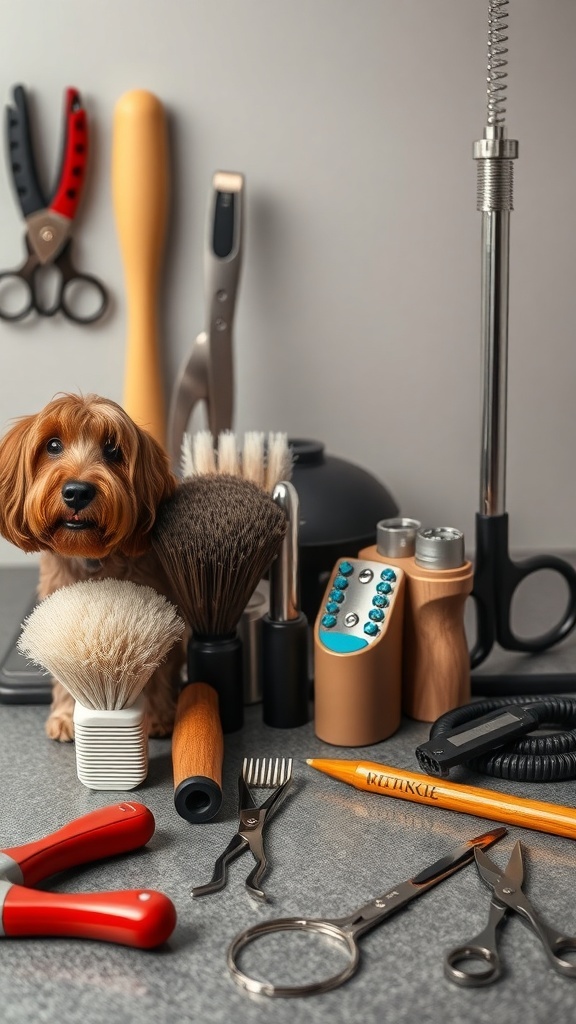
Grooming your dog can be a fun and rewarding experience. Having the right tools makes all the difference. In the image, you can see a variety of grooming tools laid out neatly. There’s a cute dog in the foreground, looking curious about the tools around it.
First up, you’ll notice brushes and combs. These are essential for keeping your dog’s coat smooth and free of tangles. Different brushes work for different coat types, so it’s good to have a few options.
Next, there are scissors and clippers. These tools help with trimming fur and maintaining a neat appearance. It’s important to use sharp, quality scissors to avoid pulling on your dog’s hair.
Don’t forget about nail clippers! Keeping your dog’s nails trimmed is vital for their comfort and health. A good pair of clippers can make this task much easier.
Lastly, you’ll see some other grooming gadgets, like a grooming glove and a spray bottle. These can help with bathing and detangling. Having a variety of tools at your disposal can make grooming a breeze.
Techniques for Bathing Your Dog
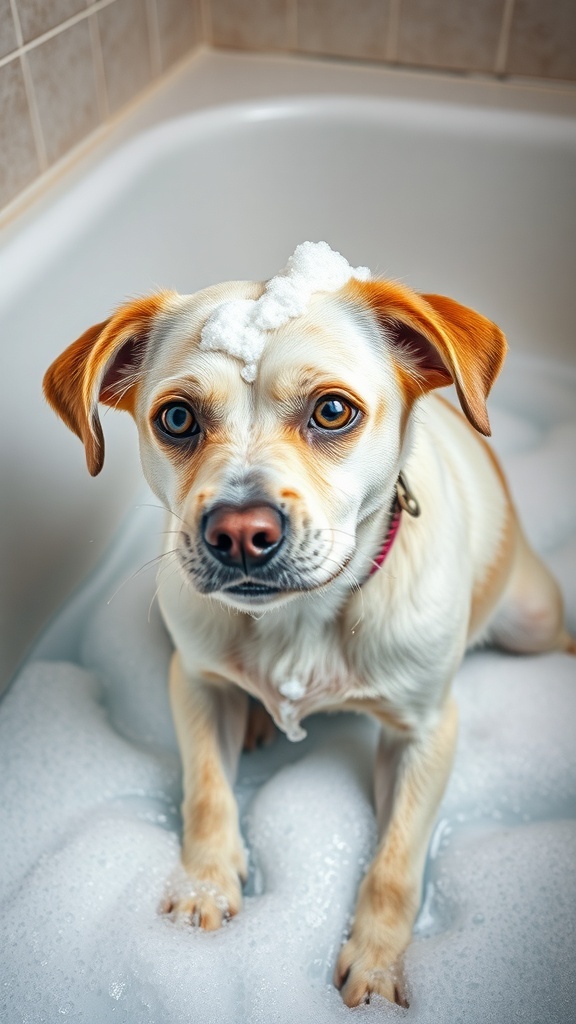
Bathing your dog can be a fun and rewarding experience. In the image, we see a cute dog sitting in a tub filled with bubbles. This playful scene highlights the joy of bath time. Keeping your dog clean is important for their health and happiness.
Start by gathering your supplies. You’ll need dog shampoo, a towel, and a non-slip mat for the tub. Make sure the water is warm, not too hot or cold. Wet your dog’s fur thoroughly before applying shampoo. Gently massage it into their coat, avoiding their eyes and ears.
Rinse well to remove all the soap. Leftover shampoo can irritate their skin. After rinsing, wrap your dog in a towel to soak up excess water. If your dog enjoys it, you can use a blow dryer on a low setting to help them dry off.
Make bath time a positive experience. Offer treats and praise to help your dog feel comfortable. With the right techniques, bathing can be a delightful bonding time for you and your pet.
Post-Grooming Care and Maintenance
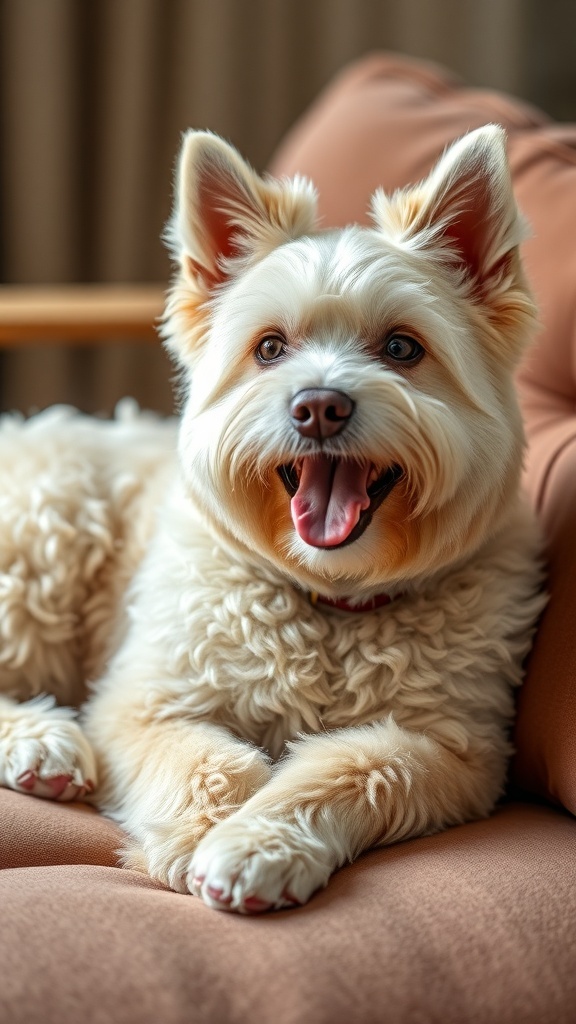
After a grooming session, your dog will likely look and feel fantastic. This is the perfect time to focus on their post-grooming care. Keeping their coat healthy is essential for their overall well-being.
Start by giving your dog some time to relax. They might feel a bit tired after all the pampering. A cozy spot on the couch, just like the one in the image, can be a great place for them to unwind.
Regular brushing is key to maintaining that fresh look. It helps prevent mats and tangles. Depending on your dog’s coat type, you may want to brush them a few times a week. This will keep their fur looking fluffy and shiny.
Don’t forget about their skin! A good quality dog shampoo can help keep their skin moisturized. If your dog has sensitive skin, consider using products specifically designed for them.
Finally, check their ears and paws. Regular cleaning can help prevent infections. Keeping up with these simple tasks will ensure your dog stays happy and healthy after grooming.
Nail Trimming Tips for a Stress-Free Experience
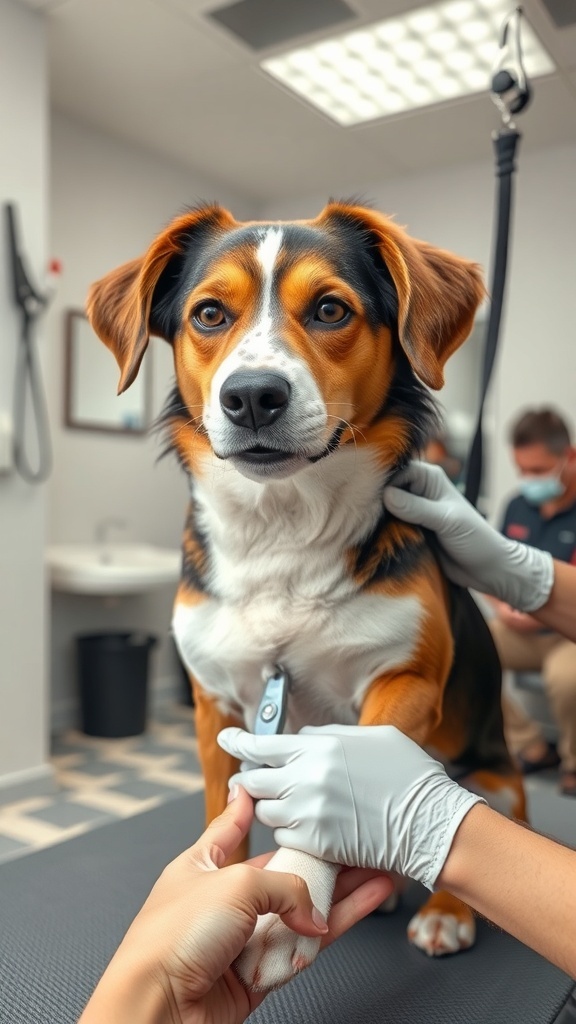
Nail trimming can be a tricky task for many dog owners. The image shows a calm dog being groomed, which sets a positive tone for this important grooming step. Keeping your dog’s nails trimmed is essential for their health and comfort.
Start by getting your dog used to having their paws handled. Gently touch their paws and nails regularly. This helps them feel more comfortable when it’s time for trimming. Use treats to create a positive association with the process.
Choose the right tools. A good pair of dog nail clippers or a grinder can make a big difference. Make sure they are sharp and designed for your dog’s size. Dull tools can cause discomfort.
When you’re ready to trim, find a quiet space. This helps reduce distractions and keeps your dog calm. Hold their paw firmly but gently. Trim just the tip of the nail, avoiding the quick, which is the pink part inside the nail. If you’re unsure, it’s better to trim less than more.
Take breaks if your dog seems anxious. It’s okay to do one paw at a time. Always reward your dog with praise or treats after each successful trim. This encourages good behavior for next time.